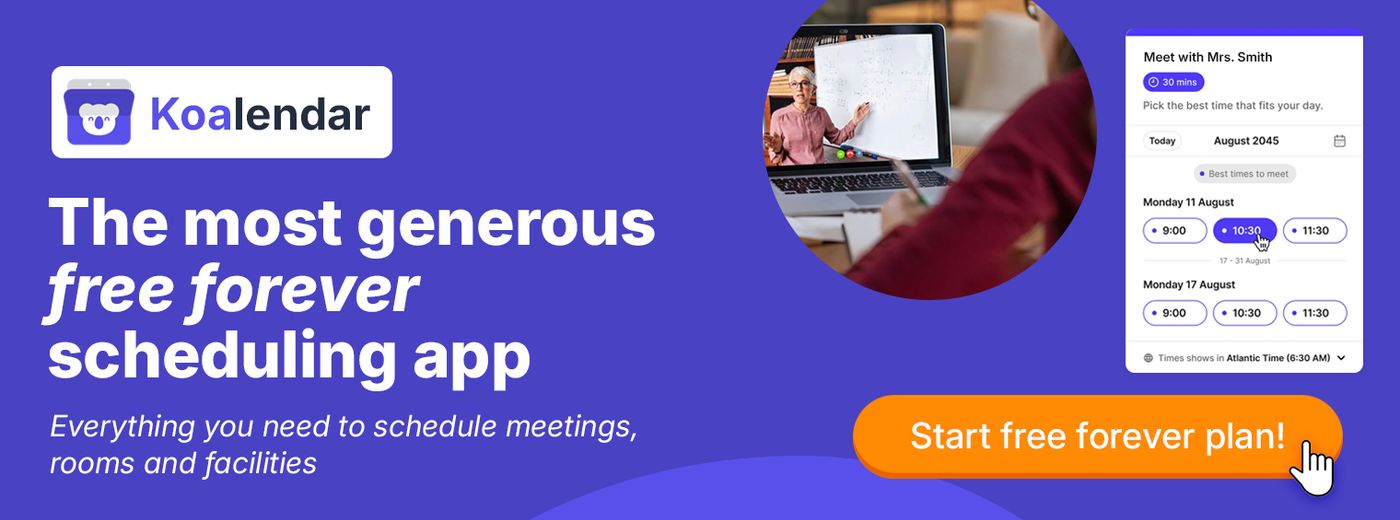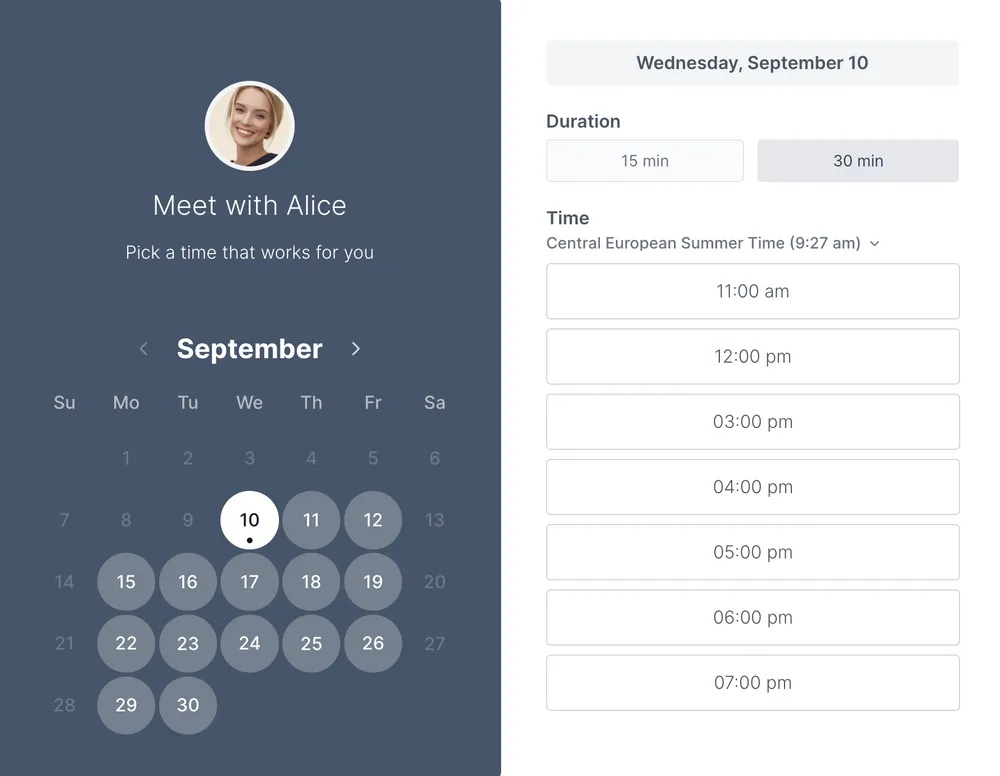Choosing the right medical scheduling software isn’t just about convenience, it can directly impact your revenue, patient satisfaction, and how smoothly your practice runs each day. Some estimates suggest that a lab with a 12% no-show rate can lose nearly $90,000 per year, and that number only grows as schedules get busier.
That’s where modern scheduling software for healthcare steps in. When phone lines are jammed, staff are juggling reschedules, and treatment rooms sit unused, you’re losing valuable time and capacity. With the right tool, every slot has a better chance of being filled, reschedules become seamless, and your team spends more time with patients, not on hold.
These improvements add up quickly. Over time, fewer no-shows and smoother scheduling can drive consistent gains in revenue and overall practice efficiency.
And the patient experience? It matters more than ever. Research shows that 67% of people prefer to book appointments online if given the option. A smarter system removes these barriers, giving patients faster, easier access to care, and giving your practice the steady, reliable scheduling flow it deserves.
We’ve researched the top medical scheduling tools and created this guide to help you find the right fit for your practice—based on your size—so you can finally keep your schedule running smoothly and stress-free.
Scheduling software for healthcare: options by practice size
A solo therapist’s scheduling struggles aren’t the same as a hospital’s, and a virtual clinic faces challenges that in-person offices probably never will.
Below is an “at a glance” table with the best software by practice size. In the next section you’ll find each tool explained in detail (who they serve best, key features, limitations, and pricing plans) so you can find the right solution for your practice size and team structure.
Healthcare booking systems at a glance
| Tool | Best for | Limitations / Watch-outs* | Unique benefits |
| Koalendar | Solo GPs, dentists, therapists, chiropractors; small and medium clinics that need simple, flexible online booking | Not an all-in-one EHR/EMR or billing system; larger hospitals may need deeper clinical integrations | Free forever with unlimited appointments; super fast setup; 24/7 self-booking; calendar sync (Google/Outlook/iCloud); automatic email/SMS reminders; customizable notifications; language & time-zone detection; payments + video links; can also support small teams (round robin, multiple providers) |
| Setmore | Solo or very small offices combining in-person and virtual visits | Free plan capped at ~200 appointments; not focused specifically on healthcare/EHR workflows | 24/7 online booking page; built-in Teleport video; accept payments at booking; automated email reminders to keep schedule predictable |
| Picktime | Independent practitioners who need simple booking + invoicing | More basic feature set; less suited to larger, multi-location clinics | Clean interface for appointments/classes; recurring bookings; real-time calendar updates; basic reporting plus invoices and online payments |
| Jane App | Allied-health & wellness clinics needing scheduling + charting + billing in one platform | Higher starting price per practitioner; can be more than a solo provider needs | Combines scheduling, charting, billing, insurance claims, and telehealth; supports multiple providers, services, and locations from one dashboard |
| SimplyBook.me | Mid-size multi-provider clinics needing customization, branding, and HIPAA-ready options | Free plan limited to ~50 bookings/month; more complex configuration than lightweight tools | Strong customization; staff/room/resource management across locations; HIPAA add-on; role-based access; branded booking pages and even client app |
| Acuity Scheduling | Clinics wanting smooth self-booking + payments + forms in one place | More of a generic scheduling/payment tool; not a full medical records system | Patients can book and pay online; automated reminders and pre-visit forms; strong calendar sync; custom intake forms to simplify check-in |
| QGenda | Large hospitals and specialty networks with complex provider schedules | Enterprise-only: overkill for small practices; requires implementation and budget | Deep workforce/shift optimization; on-call rotation management; EHR integration; powerful analytics; full audit trails and permissions for compliance |
| Relatient | Enterprise health systems focused on access, reminders, and system-wide patient engagement | Built for larger networks; pricing and rollout suited to enterprise IT teams | Self-scheduling + digital registration; multi-location visibility; automated reminders and recalls; strong focus on reducing wait times and no-shows |
| UKG (Kronos) | Hospital groups prioritizing labor management, shift scheduling, and compliance | Primarily workforce/HR-focused; not a dedicated patient scheduling UI | Real-time staffing to match demand; mobile self-service for shifts; time/attendance and credential tracking; cost and compliance optimization |
| Doxy.me | Any clinic offering virtual care that wants simple, no-install video visits | Video-first; needs pairing with a separate scheduling tool if you want rich booking automation | Browser-based telemedicine; one-click patient join; virtual waiting room; HIPAA/GDPR-compliant; easy to scale team and “rooms” |
| Mend | Medium/large clinics needing advanced telehealth + engagement + predictive no-show tools | Enterprise pricing and complexity; likely too much for solo practices | AI-driven no-show prediction; digital intake; secure HD video; tight EHR integrations; strong analytics around attendance and engagement |
| SimplePractice | Solo and small-group therapists/counselors running hybrid (in-person + virtual) practices | Pricing higher than lightweight schedulers if you only need booking; focused mainly on mental health/wellness | All-in-one for scheduling, billing, and documentation; HIPAA-compliant video; automated reminders, forms, and invoices; secure client portal |
1. Clinic scheduling software for solo practices
Solo practice scheduling software works best for independent GPs, dentists, and therapists who handle scheduling themselves. You know you’re a solo practice when you’re not just clinicians; You’re also your own receptionists, bookkeepers, and the entire IT department.
Days easily disappear into phone tag, manual rescheduling, and late-night admin work just to keep the calendar in order. A good scheduling tool should lift that burden so doctors can focus on patient care instead of logistics.
Features to look for:
| Feature | Why it matters | How it helps |
| Online booking 24/7 | Patients book anytime → fewer calls | Hosted booking pages simplify scheduling |
| Calendar sync | Prevents conflicts and double bookings | Real-time updates across devices |
| Automated reminders | Reduces no-shows | Sends confirmations and follow-ups automatically |
| Simple setup | Go live in minutes | Intuitive dashboards and no IT needed |
Here are some scheduling tools for solo practices to consider:
Koalendar
Koalendar is a free, lightweight, and intuitive scheduling tool built for busy professionals who want more time with patients and less time on admin. It’s built for simplicity from day one, with no setup stress, no learning curve, and no limits on how many appointments you can book.

Best for: Independent GPs, dentists, chiropractors, and other types of therapists who want an easy, automated way to manage bookings without paying for enterprise-level tools.
What you can do with Koalendar:
- Skip worrying about limits: Schedule as many appointments or pages as you need, even on the free plan
- Eliminate scheduling chaos: Let patients book themselves online 24/7, so you don’t spend your evenings returning calls or emails
- Stay in sync: Connect Google, Outlook, or iCloud calendars so you never double-book or miss a slot
- Reduce no-shows: Email and SMS reminders keep patients on schedule without extra admin work (paid feature)
- Keep messages on brand: Customize confirmations and notifications to match your tone and practice style
- Make booking effortless: Automatic language and time-zone detection adapts to each patient, no matter where they’re based
- Simplify billing: Payments go directly to your account while clients receive automatic receipts — say goodbye to manual payment tracking
- Offer video consultations: Add video call links directly to appointments so patients can connect instantly for remote or hybrid sessions
- Scale at your own pace: Start free, test every feature, and upgrade only when you need advanced options like follow-ups, payments, or branding
Pricing: Free forever; Pro from $6.99/month.
Setmore
Setmore is an appointment scheduler that helps small practices simplify scheduling, payments, and video calls from one dashboard.

Best for: Solo or small offices that want to manage in-person and online appointments in one place.
What you can do with Setmore:
- Let patients book anytime: Offer a 24/7 online booking page that fills your schedule even when you’re busy
- Meet virtually: Launch secure video sessions with Teleport video built into every booking
- Streamline payments: Accept payments at booking to reduce no-shows and improve cash flow
- Save admin time: Automated email reminders keep your calendar full and your day predictable
Pricing: Limited (200 appointments) free plan available; Pro from $5/user/month when paid annually.
Picktime
Picktime is a simple scheduler designed for small service providers and practitioners.

Best for: Independent professionals who want a quick, no-install tool to manage bookings and invoices.
What you can do with Picktime:
- Simplify your schedule: Manage appointments, classes, and recurring bookings in one clean interface
- Avoid double-bookings: Real-time calendar updates keep your availability accurate across devices
- Track payments easily: Send invoices and accept online payments in seconds
- Stay organized: Access everything, like appointments, clients, and reports, from any browser
Pricing: Limited free plan available; paid plans from $3/user/month.
2. Patient scheduling platform for multi-provider teams
Once a practice grows beyond one provider, scheduling quickly becomes a coordination challenge.
Overlapping appointments, shared rooms, and an overworked front desk can cause chaos without the right system. Multi-provider scheduling software keeps everyone (and every room) in sync.
Features to look for:
| Feature | Why it matters | How it helps |
| Team & provider calendars | Avoid overlap | Central view of availability across all practitioners |
| Room & resource management | Maximize space | Assign rooms/equipment directly within bookings |
| Access controls | Protect privacy | Limit what front-desk staff or clinicians can view or edit |
| Custom appointment types | Support variety | Tailor scheduling flows for each service or specialty |
Here are some scheduling tools for multi-provider teams to consider:
Koalendar
As we saw above, Koalendar suits solo medical professionals, but also grows alongside your practice. It lets you manage a small team effortlessly, from the availability of every provider, to collective bookings, to round robin scheduling.
"For a person that runs several organizations and has tons of meetings being scheduled each day due to everyone having pandemic meeting fever, this has saved me time in not having to deal with the back-and-forth email just to narrow down a date/time for a meeting but also goes the extra step in booking it right on my calendar for me and just popping me an email to let me know it is schedule. LOVE IT!" Deb D. Founder/ CEO Hospital and Healthcare

Jane App
Jane App combines scheduling, charting, billing, and telehealth in a single, user-friendly platform.

Best for: Allied-health and wellness clinics that need a unified tool for patient care and admin.
What you can do with Jane:
- Keep your clinic coordinated: Manage multiple providers, services, and locations from one dashboard
- Streamline patient care: Handle charting, payments, and insurance claims alongside scheduling
- Offer flexibility: Let patients book online and receive reminders automatically
- Stay connected: Host secure telehealth sessions without leaving the platform
Pricing: From $38/month per practitioner.
SimplyBook.me
SimplyBook.me is a flexible scheduling system built for multi-provider clinics and service teams.

Best for: Mid-size clinics that want a customizable, branded experience with HIPAA-ready options.
What you can do with SimplyBook.me:
- Automate admin tasks: Handle bookings, cancellations, and reminders automatically
- Coordinate your team: Manage staff, rooms, and resources across multiple locations
- Keep patient data secure: Add HIPAA compliance and role-based access controls
- Build your brand: Customize booking pages and even create your own client app
Pricing: Free plan (50 bookings/month); paid plans from $9.50/month.
Acuity Scheduling
Acuity Scheduling (by Squarespace) makes it easy for patients to self-book, pay, and prepare for their visit in advance.

Best for: Clinics that want to combine scheduling, payments, and forms in one tool.
What you can do with Acuity:
- Reduce friction: Let patients book and pay online without the need to make phone calls
- Automate reminders: Send confirmations and pre-visit forms automatically
- Sync calendars instantly: Keep all provider schedules up to date across devices
- Simplify check-in: Collect patient info with custom intake forms before appointments
Pricing: Plans start at $16/month.
3. Physician scheduling platform for hospitals and networks
In large hospitals or healthcare networks, scheduling is more than a convenience. It’s necessary for these practices to scale, ensure compliance, and integrate with other software they use.
If you’re coordinating hundreds of staff, syncing with EHR systems, and managing sensitive patient data, enterprise-grade platforms are built to handle that complexity.
Features to look for:
| Feature | Why it matters | How it helps |
| EHR/EMR integrations | Connects data systems | Scheduling ties directly into patient records and billing |
| Insurance verification | Prevents claim errors | Eligibility checks before the visit save hours later |
| Role-based permissions | Secures sensitive data | nsures the right access level for each role |
| Audit logs | Supports compliance | Every change is tracked for full visibility |
Here are some scheduling tools for healthcare organizations to consider:
QGenda
QGenda is an enterprise scheduling and workforce management platform built for large healthcare organizations.

Best for: Hospitals and specialty networks managing complex provider schedules and compliance.
What you can do with QGenda:
- Optimize coverage: Balance shifts, specialties, and on-call rotations automatically
- Improve coordination: Integrate scheduling with EHRs for consistent data across departments
- Track performance: Use analytics to forecast staffing needs and reduce overtime
- Stay compliant: Maintain full audit trails and role-based permissions
Pricing: Custom enterprise quote.
Relatient
Relatient connects scheduling, reminders, and patient engagement across large health systems.

Best for: Enterprise healthcare networks focused on improving access and reducing missed appointments.
What you can do with Relatient:
- Empower patients: Enable self-scheduling and digital registration across departments
- Automate communication: Send reminders, recalls, and updates without manual input
- Centralize data: Gain visibility into scheduling performance across all locations
- Improve outcomes: Reduce patient wait times and no-shows through automated workflows
Pricing: Quote available upon request.
UKG (Kronos)
UKG (formerly Kronos) is a comprehensive HR tool that provides workforce and staff scheduling software built for healthcare at scale.

Best for: Hospital groups managing complex shift rotations and labor compliance.
What you can do with UKG:
- Balance workloads: Match staffing to patient demand in real time
- Simplify scheduling: Enable shift swaps and self-service from mobile devices
- Reduce costs: Optimize labor hours while maintaining coverage
- Ensure compliance: Track time, attendance, and credentialing automatically
Pricing: Enterprise-level quote.
4. Telehealth-ready practice scheduling solution
Running a virtual or hybrid practice introduces new challenges: time zones, technology barriers, and patient no-shows.
A telehealth-friendly scheduling tool keeps remote visits seamless, from booking to video call, all while maintaining the required privacy and compliance.
Features to look for:
| Feature | Why it matters | How it helps |
| Built-in video | Streamlines visits | Patients join directly from their confirmation link. |
| Time-zone auto-adjustment | Reduces confusion | Displays correct local time automatically. |
| Virtual waiting room | Keeps visits organized | Manages patient flow just like an in-office queue. |
| Secure communication | Protects privacy | Encrypts calls, chats, and file sharing. |
Below is our choices for healthcare provider scheduling solutions:
Doxy.me
Doxy.me is a simple, browser-based telemedicine platform that makes video visits effortless for patients and providers.

Best for: Clinics offering virtual care and needing a secure, no-install experience.
What you can do with Doxy.me:
- Simplify access: Patients join sessions with one click, no apps or downloads
- Create a smooth flow: Use a virtual waiting room to manage multiple patients easily
- Protect privacy: Every call is encrypted and HIPAA/GDPR compliant
- Scale up easily: Add team members or rooms as your virtual practice grows
Pricing: Free Basic; Professional $29/month if paid annually.
Mend
Mend is a specialized tool that combines telehealth with patient engagement and predictive no-show analytics.

systems.
What you can do with Mend:
- Reduce no-shows: Predict cancellations using AI-driven analytics
- Streamline intake: Collect patient forms digitally before each visit
- Offer reliable video: Host secure HD video sessions without extra software
- Connect everything: Integrate appointments and patient data directly with your EHR
Pricing: Custom enterprise pricing.
SimplePractice
SimplePractice is EHR software and telehealth platform trusted by mental-health and wellness professionals.

Best for: Solo or small-group therapists and counselors running hybrid practices.
What you can do with SimplePractice:
- Simplify your workflow: Handle scheduling, billing, and documentation in one system
- Meet patients online: Host HIPAA-compliant video sessions directly from your calendar
- Automate admin tasks: Send reminders, intake forms, and invoices automatically
- Keep patients connected: Offer a secure client portal for messages and resources
Pricing: From $49/month; with a discount if you choose a 7-day free trial.
How to choose the right medical scheduling software
Choosing the right scheduling software can feel overwhelming. There are dozens of tools promising to save time and improve patient experience, but how do you know which will suit your unique business needs?
The best way to decide is to focus on the key features you'll need depending on your size and factors like cost, ease of setup, support, and fit for your practice.
Based on all that, here are our recommendations:
Solo practices (independent GPs, therapists, dentists)
Recommended: Koalendar: For most solo providers, Koalendar offers the best balance of simplicity, automation, and cost, without the overhead of a full EHR system.
- Why: Easiest ramp-up for a solo provider who’s doing their own admin.
- What you gain:
- Unlimited appointments on the free plan
- 24/7 self-booking so you’re not stuck returning calls
- Calendar sync to avoid double-booking
- Email/SMS reminders to cut no-shows
- Simple payments + video links when you’re ready to offer remote sessions
- Example: A private physiotherapist spends nearly two hours a day juggling patient calls and confirming appointments. With no receptionist, scheduling quickly becomes the most stressful part of her workweek. Then, she switches to Koalendar and creates a simple online booking page with separate appointment types for first-time visits and follow-ups. Patients now choose their own times and automatically receive email and SMS reminders, which cut no-shows in the first month already. Koalendar syncs with her Google Calendar, so the therapist can see her full week at a glance and adjust slots instantly.
Multi-provider clinics (small to mid-size teams)
Recommended: Jane App / Koalendar
If your clinic needs an all-in-one system with charting and billing built in, Jane App is a strong choice. If you’re mainly solving scheduling chaos for a small team, a lighter tool like Koalendar may be more than enough.
- Why:
- Ideal when you need scheduling + charting + billing + telehealth in one system.
- Great fit for allied-health and wellness clinics that want a single “source of truth” for clinical and admin work.
When Koalendar may be better instead:
- You’re a small clinic that mainly needs shared calendars, online booking, and reminders, not integrated charting.
- You want to stay lightweight, affordable, and flexible.
Hospitals and large healthcare networks
Recommended: QGenda
For hospitals and health systems coordinating hundreds of providers, QGenda’s workforce-first approach makes it a better fit than lightweight appointment schedulers.
- Why: Purpose-built for enterprise scheduling and workforce management at scale.
- Best for:
- Complex shift patterns, on-call rotations, and cross-department coverage
- Deep EHR integrations and compliance requirements
- What stands out:
- Workforce optimization and analytics
- Role-based access and full audit trails
- Strong fit for enterprise IT, legal, and operations teams
Telehealth-first or hybrid practices
Recommended: SimplePractice (with Doxy.me as the video-only option)
If telehealth is central to your practice and you want everything in one place, SimplePractice is a strong contender. If you’re happy with your existing scheduler but need effortless, compliant video visits, pair a tool like Koalendar with Doxy.me.
- Why SimplePractice:
- Excellent for mental-health and wellness practices that want telehealth, scheduling, billing, and documentation in one platform.
- Fits solo and small-group providers who live in a hybrid world (some in-person, some remote).
- When Doxy.me might be a fit instead:
- You already have scheduling handled elsewhere (e.g., Koalendar) and just need secure, easy video visits.
- You want a very low-friction, browser-based video tool for a broader mix of specialties.
Implementation tips for a smooth rollout of your medical scheduling tool
Have you picked your scheduling software? Congrats! The next step is implementing it effectively. A smooth rollout ensures your team adopts it quickly and your patients enjoy the benefits right away.
Start small, train staff, measure impact
- Start small with one or two appointment types or providers.
- Train your team on the basics: reschedules, viewing bookings, updating availability.
- Review early results together after a few weeks to build confidence and buy-in.
Align your workflows before launch
- Who manages last-minute cancellations?
- How often are reminder messages sent?
- When does a missed appointment trigger follow-up?
Track what’s working once you’re live
- No-show rate: How much has it dropped within the first three months?
- Booked vs. available slots: Improved utilization means higher revenue
- Admin hours saved: Compare weekly time spent before and after
- Patient feedback: Ask how easy it is to book or reschedule online
The outcome: less manual work, more filled appointments, and happier patients over time.
The right medical scheduling software can transform your practice
At the end of the day, the best medical scheduling software is the one that fits your workflow, scales with your practice, and keeps both patients and providers happy.
To recap:
- Solo providers: Simple, affordable tools like Koalendar that automate reminders and enable self-service booking
- Multi-provider clinics: Platforms with shared calendars, room management, and access controls (Koalendar works its magic here too!)
- Enterprises or hospitals: Systems built for EHR integrations, data compliance, and multi-department coordination
- Telehealth practices: Scheduling tools that support video calls, time zone adjustments, and easy virtual check-ins:
No matter your size, better scheduling leads to better care and a more sustainable healthcare business.
Start in minutes and see how much easier scheduling can be. Try Koalendar free today — no setup fees, no limits, no credit card required.




